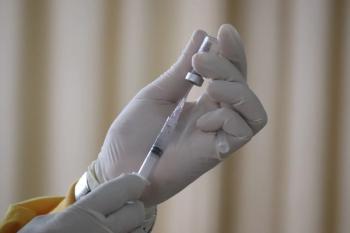
As NDM-CRE Infections Rise Significantly, Diagnostic Access Emerges as Weak Link
John Osiecki, PhD, explains how faster, standardized testing can speed detection and strengthen antimicrobial stewardship.
US infections caused by
To explore the diagnostics angle, and how faster, broader testing can strengthen stewardship, John Osiecki, PhD, vice president, medical affairs in North America at bioMérieux, spoke to Contagion on this significant need.
Contagion: The CDC highlighted limited access to carbapenemase testing as a key factor in the rapid spread of NDM-producing bacteria. From your perspective, what are the most critical diagnostic gaps in US hospitals right now, and how are they impacting timely detection and treatment?
Osiecki: Access, efficiency and standardization across the healthcare system pose major challenges today. On-site testing is limited in many settings, and in settings where testing is available, it may take several days to get the results. Even then, the testing methods vary by site and may miss or inappropriately classify resistance for these organisms or have gaps in the antibiotics they test for.
Additionally, interoperability and workforce challenges can exacerbate these constraints. Without the right technology and programming in place, results don’t always surface inside the EHR with clear treatment guidance. Many hospitals and labs also have staffing shortages or a lack of staff who are appropriately trained in this area, which may make it harder to sustain best practices.
All of these issues may delay or impact appropriate patient care, as physicians are likely to start treatment that may fail. It’s important for hospitals to evaluate the capabilities and performance characteristics of diagnostic tools—as well as their own processes, knowledge, and capacity—to address these challenges and limitations and ensure patients are getting the most appropriate and effective treatment.
Contagion: Molecular and rapid diagnostic tools have advanced significantly, but uptake across health systems remains uneven. What barriers, financial, logistical, or educational, continue to slow the broader adoption of these technologies in clinical practice?
Osiecki: The time and financial investment required to implement these advanced tools and technologies can be a challenge for many hospitals. Budgets are tight, and new molecular tests may cost more up front, especially when system technology upgrades are required. Additionally, insurance coverage isn’t always clear or consistent. This is on top of the staffing shortages many hospitals and labs are facing, which makes awareness and training difficult.
Hospitals need simple, local proof that these tests both streamline and improve patient care, as well as a clear playbook for implementation.
Contagion: How can improved diagnostic access and turnaround times strengthen antimicrobial stewardship programs, and what steps are most urgent to prevent the next surge in resistance?
Osiecki: Investing in diagnostic testing that delivers timely, accurate results helps guide clinicians to the right care plan sooner, reduce transmission and improve patient outcomes. It also enables us to track trends and keep stewardship protocols current.
The steps needed to effectively prevent the next wave of resistance are:
- Invest in diagnostic capacity
- Define clear turnaround goals for tests and track performance
- Embed results in EHR workflows
- Standardize systemwide processes and protocols
- Educate staff on protocols and appropriate actions
- Align incentives to ensure coverage and procurement recognize the value of earlier, appropriate treatment and better outcomes By taking these steps now, we will be better prepared to recognize and respond in the future.
All in all, NDM-CRE’s surge is as much a diagnostics problem as a drug problem. Close testing gaps now: set turnaround goals, embed results in the EHR, standardize protocols, and move patients to effective therapy faster to curb spread.
References
1.CDC Report Finds Sharp Rise in Dangerous Drug-Resistant Bacteria. September 23, 2025. Accessed October, 2025. https://www.cdc.gov/media/releases/2025/2025-cdc-report-finds-sharp-rise-in-dangerous-drug-resistant-bacteria.html
2.Danielle A. Rankin, Anna Stahl, Sarah Sabour, et al. Changes in Carbapenemase-Producing Carbapenem-Resistant Enterobacterales, 2019 to 2023 . Ann Intern Med. [Epub 23 September 2025]. doi:10.7326/ANNALS-25-02404
Newsletter
Stay ahead of emerging infectious disease threats with expert insights and breaking research. Subscribe now to get updates delivered straight to your inbox.
















































































































































































































































































